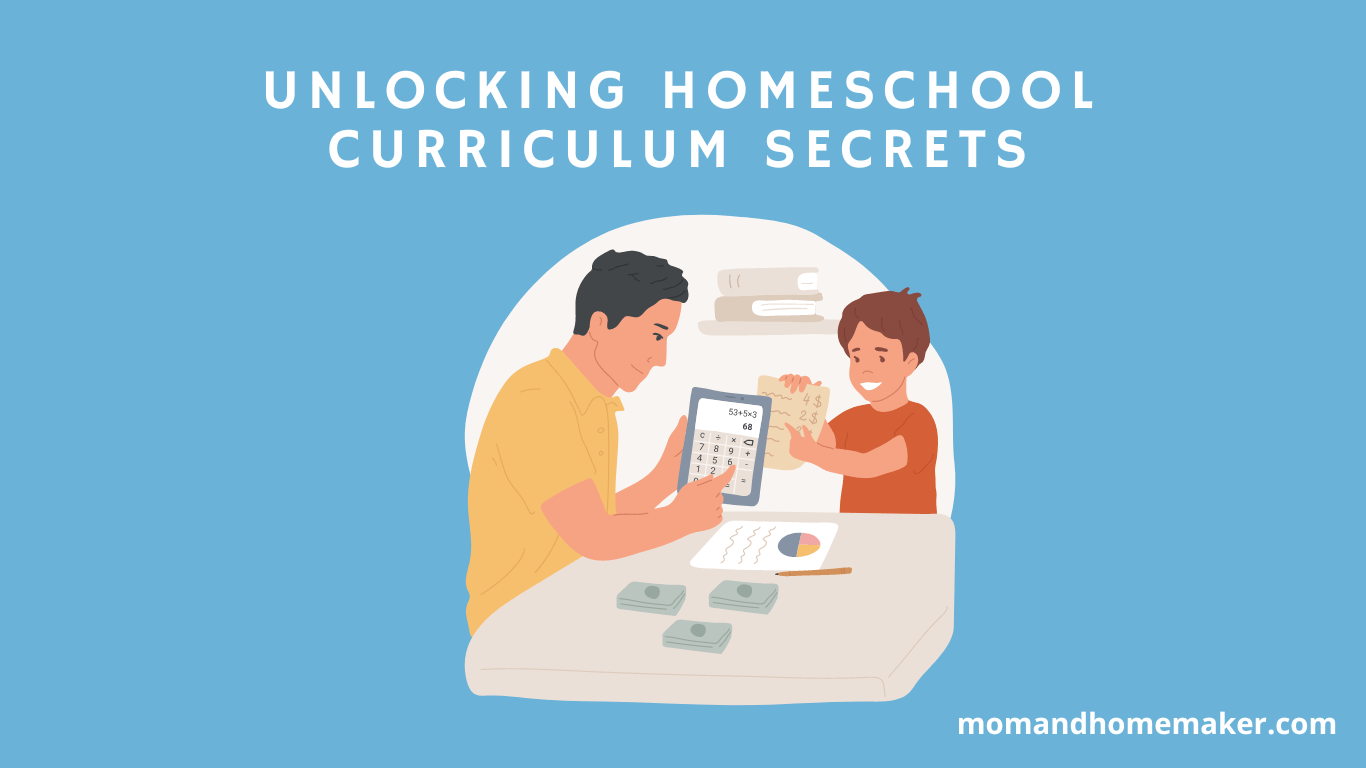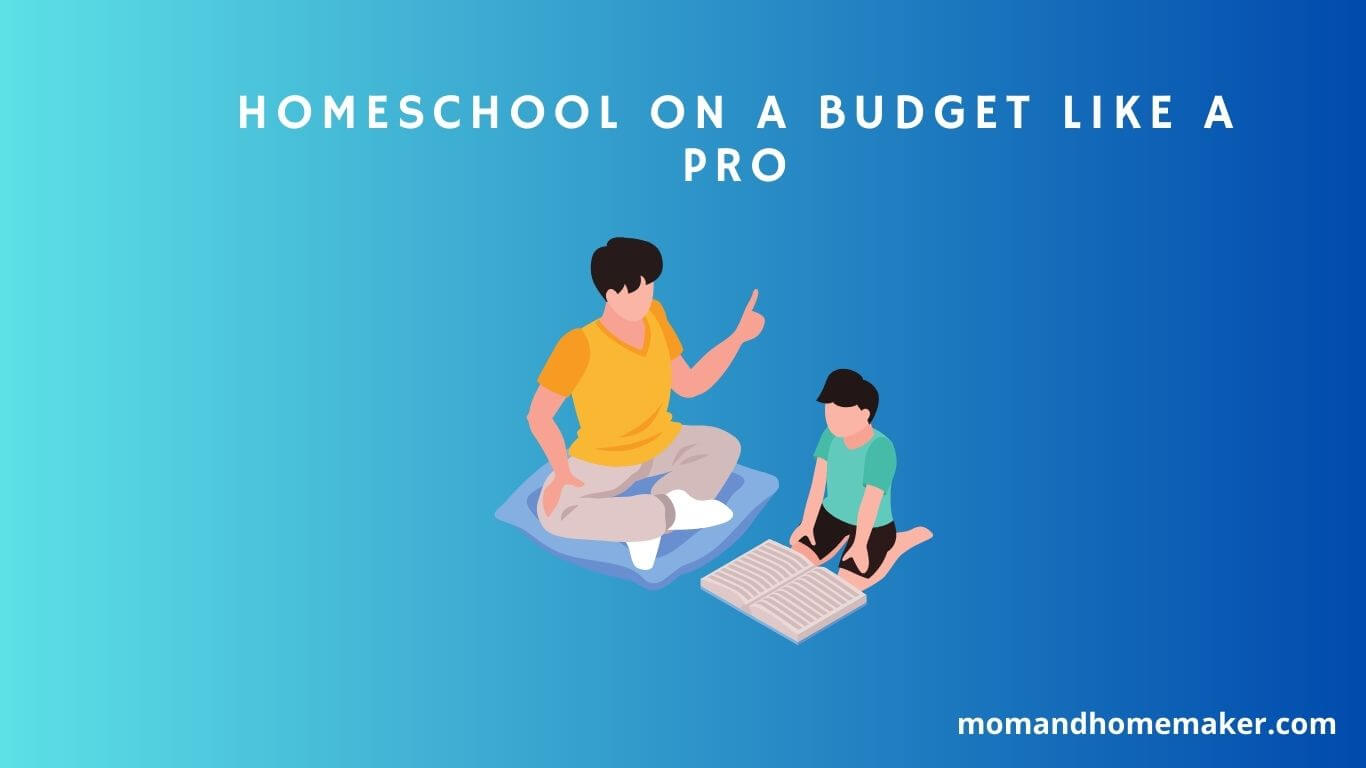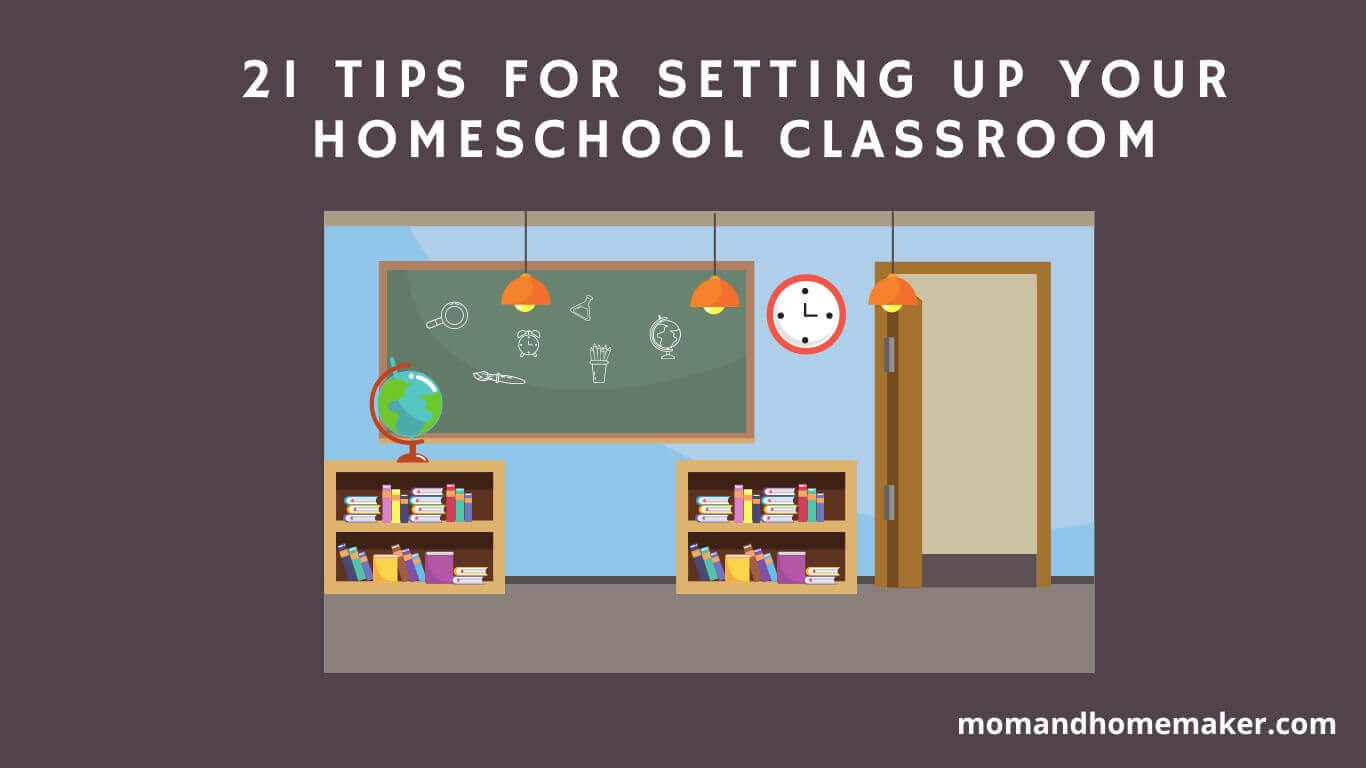Hey there fellow homeschoolers! Are you feeling overwhelmed by the chaos that comes with homeschooling? Do you find yourself struggling to keep up with your daily schedule and routines, leaving you feeling frustrated and unproductive?
Well, fear not my friends! As a homeschooler, I have faced my fair share of tumultuous days and have learned some tips and tricks along the way. In this article, I will be sharing with you 14 strategies that can help you handle those challenging days with ease.
So sit back, take a deep breath, and get ready to reclaim your sanity and freedom in your homeschooling journey.
How to Handle Tumultuous Homeschool Days in 14 Ways
1. Create A Daily Schedule
Creating a daily schedule is crucial in homeschooling as it provides structure and consistency for your child’s learning. Importance and implementation go hand in hand when it comes to scheduling. A well-planned schedule ensures that all subject areas are covered, including breaks for rest and playtime. Incorporate your child’s interests, age, and learning style into the schedule.
For example, if your child loves science, incorporate fun experiments into the lesson plan to keep them engaged. Likewise, if your child has a shorter attention span, break up lessons into smaller increments throughout the day.
Flexibility is key; you can always adjust the schedule as needed to suit your child’s needs. Adjusting the schedule helps deal with unexpected challenges that may arise during homeschooling days. Don’t be afraid to shift things around or take an impromptu break if needed. Remember that not every day will be perfect, but having a set routine will make getting back on track much easier.
With a solid daily schedule in place, it’s time to set realistic expectations for both yourself and your child. How do you ensure that both parties are happy with what they’re accomplishing? Keep reading for tips on how to set achievable goals without sacrificing learning opportunities.
2. Set Realistic Expectations
Realistic expectations are crucial in ensuring a successful homeschooling experience. As a parent, you may have grandiose visions of your child reading Shakespeare before they turn ten or solving complex math problems with ease. While it’s important to challenge your child academically, setting unrealistic goals will only lead to frustration and disappointment on both ends.
One way to set realistic goals is to take a step back and evaluate your child’s abilities objectively. Assess their strengths and weaknesses and tailor the curriculum accordingly. Remember that every child is unique and has their own pace of learning. What works for one child may not work for another.
Adjusting the curriculum can also help in setting realistic expectations. Don’t be afraid to switch things up if something isn’t working. Maybe your child needs more hands-on activities instead of reading from a textbook or perhaps they need extra practice with a particular subject. Flexibility is key in homeschooling.
Be kind to yourself – Remember that you are doing the best you can as a parent and teacher.
Celebrate small victories – Acknowledge even the smallest achievements, as they add up over time.
Don’t compare – Avoid comparing your child’s progress with other homeschoolers or traditional school students.
Setting realistic expectations can make all the difference in navigating through tumultuous homeschool days. However, it’s important not to forget about taking care of oneself, celebrating small victories along the way, avoiding comparisons, and taking regular breaks for optimal success in the homeschooling journey.
3. Take Breaks
Picture this: you’re in the middle of a homeschool day and tensions are running high. Your kids are restless, their focus is waning, and everything seems to be going wrong. In moments like these, it’s important to take a step back and give everyone a chance to breathe. Taking breaks can be one of the most effective ways to manage tumultuous homeschool days.
Outdoor activities are a great way to reset your child’s mind and body. When we spend time outside, we reconnect with nature and eliminate distractions that can negatively impact our mood. Whether it’s taking a walk around the block or playing in the backyard, spending time in the fresh air can be incredibly beneficial for both you and your child. Not only does it help with stress management, but it also promotes physical activity which is essential for overall wellbeing.
By incorporating these practices into your homeschool routine, you’ll create an environment that promotes calmness and positivity – even on those tough days.
| Activity | Time Required | Materials Needed |
|---|---|---|
| Scavenger Hunt | 30 minutes | List of items |
| Nature Walk | 45 minutes | Comfortable shoes |
| Gardening | 1 hour | Gloves |
Remember: taking breaks doesn’t have to mean wasting time. By incorporating fun outdoor activities into your homeschool routine, you’ll not only help your child stay focused but also create lasting memories together. So next time things get rough during your homeschool day, don’t hesitate to take a step back and incorporate some of these tips into your routine.
4. Incorporate Fun And Games
I’m sure many of you are looking for ways to make tumultuous homeschool days more fun and engaging. Incorporating puzzles into your lesson plans can be a great way to add a bit of fun and challenge for your students.
Board games are another great option for homeschoolers, as they can be adapted to many different subjects. Educational games are also a great tool to help make learning more enjoyable for kids. Not only do they provide an engaging way to learn, but they can also help foster problem-solving skills and critical thinking.
Finding creative ways to incorporate fun and games into your homeschool is important in order to keep your students engaged and motivated. Let’s discuss the various ways to incorporate puzzles, board games, and educational games into your homeschool day!
5. Incorporate Puzzles
Have you ever experienced a homeschool day where the kids just won’t sit still and focus on their lessons? It’s normal to feel frustrated when things get chaotic, but as a homeschooling expert, I have some tips for you. One of the best ways to incorporate fun into your homeschool routine is by incorporating puzzles. Not only are they entertaining, but there are also many benefits to doing puzzles.
Puzzles are not only enjoyable but also help develop important skills such as problem-solving, critical thinking, and fine motor skills. In addition, puzzles can be used as a tool for teaching subjects like math and science.
When choosing puzzles for your children, make sure they are age-appropriate and challenging enough to keep them engaged without causing frustration. Puzzles with bright colors and interesting designs are great for younger children while more complex ones with intricate details will appeal to older kids.
Incorporating puzzles into your homeschool routine can be a lifesaver on those tumultuous days. Not only do they provide an enjoyable break from traditional lessons, but they also offer valuable learning opportunities.
So why not add some puzzle time to your daily schedule? You’ll be amazed at how much fun it can be!
6. Utilize Board Games
If you’re looking for another way to incorporate fun and educational activities into your homeschool routine, why not utilize board games? Board games are a great way to break up the monotony of traditional lessons while still providing valuable learning opportunities. Plus, they offer a chance for family bonding and can be enjoyed by all ages.
Board game recommendations for homeschooling include games that focus on strategy, critical thinking, and problem-solving. Games like Settlers of Catan, Ticket to Ride, and Pandemic are great options for older children and teens. For younger kids, games like Candy Land or Chutes and Ladders can help with counting and color recognition. Don’t forget about classic board games like Monopoly or Scrabble for a fun challenge.
The benefits of homeschooling with board games go beyond just entertainment. These games provide opportunities for socialization, creativity, and teamwork. They also teach important skills such as decision-making, logic, and communication.
So next time you’re feeling stuck in your homeschool routine, try incorporating some board game time into your schedule – you might be surprised at how much fun and learning can happen!
7. Use Educational Games
So you’ve already tried incorporating board games into your homeschool routine, but you’re looking for even more ways to make learning fun and engaging. One great option to consider is using educational games. These are specifically designed to teach various subjects while keeping kids entertained.
One of the biggest benefits of using educational games in homeschooling is that they can make learning more interactive and hands-on. Kids can work through problems and challenges while having fun at the same time.
Plus, many of these games offer immediate feedback, so kids can see their progress and areas where they need improvement. Of course, there are also some challenges to consider when using educational games as part of your homeschool curriculum.
For example, it can be difficult to find games that align with your teaching goals and standards. Some games may be too easy or too difficult for certain age groups or skill levels. However, with some research and experimentation, you should be able to find a variety of popular educational games that work well for your family’s needs.
8. Utilize Online Resources
When it comes to homeschooling, the internet is a treasure trove of educational resources. However, not all resources are created equal. It’s important to take the time to find quality, free resources that align with your child’s learning style and interests.
One way to find these resources is by joining online homeschooling communities or forums. These groups can provide valuable recommendations and reviews from other homeschooling parents who have tried and tested various resources. Many websites offer free trials for their paid resources, so take advantage of these offers before committing to a purchase.
Many programs offer lesson plans, assessments, and progress-tracking tools that can help streamline your homeschooling experience. Don’t be afraid to reach out to customer service for assistance or advice on how best to use the program for your child’s needs.
With the abundance of online resources available, it’s easy to get overwhelmed and lose sight of your goals. Establish clear boundaries for yourself and your child when it comes to screen time and online activities. Set specific times for using online resources and stick to them.
This will help ensure that you are using these tools effectively without sacrificing other important aspects of homeschooling such as hands-on activities and outdoor exploration.
9. Establish Clear Boundaries
As a homeschooling parent, it’s important to establish clear boundaries for both yourself and your children. Why does it matter? Without boundaries, chaos can ensue, causing stress and frustration for everyone involved. By setting clear expectations and limits, you create a sense of structure that fosters creativity and productivity.
So how do you establish these boundaries? Start by defining your priorities. What are the most important things that need to be accomplished each day or week? Make a list of these priorities and then set realistic goals for achieving them. This will help you stay focused on what really matters, while also giving your children a sense of purpose.
Of course, establishing boundaries is only half the battle. You also need to deal with boundary pushers – those children who constantly test the limits. One effective strategy is to redirect their focus to something positive.
For example, if a child is repeatedly interrupting during a lesson, try giving them a specific task to complete on their own before returning to the group activity. This not only helps them refocus their energy but also reinforces the importance of respecting boundaries.
It’s one thing to have structure in place but if you’re not organized, chaos can still reign supreme. So let’s explore some tips for getting everything in order so that homeschool days run smoothly and efficiently.
10. Get Organized
It’s important to set a schedule for your day. This will help you keep track of when to start and end tasks, and have a sense of structure so that you don’t get overwhelmed. Once you have the schedule, break down tasks into manageable pieces. This will help you avoid procrastination and motivate you to complete tasks.
Finally, prioritize activities. Don’t be afraid to move tasks around if something unexpected arises. With a plan and a purpose, you and your family will be able to manage tumultuous homeschool days with ease.
11. Set A Schedule
Setting a schedule is one of the most important things you can do to get organized and stay on track during tumultuous homeschool days. Picture this: waking up early, feeling refreshed and ready to start your day with a clear plan in mind. With a schedule, you can achieve this sense of control over your time and activities.
When creating your schedule, consider the needs and preferences of each family member. This will ensure that everyone is able to participate in activities they enjoy while also completing their necessary schoolwork.
Consistency in scheduling is key to maintaining order in your homeschool environment. Stick to your planned times for lessons, breaks, meals, and other activities as much as possible. Of course, there will be days when unexpected events occur or plans change – that’s okay!
Be flexible enough to adjust your schedule accordingly without completely throwing it out the window. Overall, setting a schedule can provide structure and organization during chaotic homeschool days. Remember, the goal is not perfection but rather progress toward your educational goals.
12. Break Down Tasks
As a homeschooling parent, I know that task delegation and time management are crucial skills to master in order to maintain a productive and stress-free learning environment. Breaking down larger tasks into smaller, more manageable ones can help alleviate feelings of overwhelm and make it easier to stay on track with your schedule.
Delegate responsibilities among family members according to their strengths and interests. This not only helps lighten the workload but also allows everyone to feel like they are contributing to the overall success of the homeschool experience.
Encourage your children to work efficiently by eliminating distractions and staying focused during designated work times. Remember, it’s okay if things don’t always go as planned. Use unexpected changes or setbacks as an opportunity to reassess your priorities and adjust your schedule accordingly.
By breaking down tasks and managing your time effectively, you can create a more positive and enjoyable homeschool experience for everyone involved.
13. Prioritize Activities
Now that we’ve talked about breaking down tasks, let’s move on to another crucial aspect of getting organized – prioritizing activities. I know that activity choices can often feel overwhelming. With so many options available, it’s important to prioritize them based on their level of importance and relevance to your child’s education.
Effective time management is key when it comes to prioritizing activities. Start by identifying the most important subjects or skills that your child needs to focus on. Then, allocate time accordingly and ensure that these topics receive the necessary attention and effort.
While it’s important to prioritize academic subjects, don’t forget about extracurricular activities as well. These can play an important role in developing social skills, creativity, and physical fitness. However, be mindful of how much time these activities take up and make sure they don’t interfere with academic progress. Don’t be afraid to reassess priorities as needed and adjust your schedule accordingly – flexibility is key in the world of homeschooling!
14. Celebrate Your Successes
Reflecting on your achievements is an important part of any homeschooling journey. When you’re feeling like everything is going wrong, it can be helpful to take a step back and remember all the things that have gone right.
Maybe your child finally mastered long division or wrote a beautiful essay. Or maybe you had a day where everyone was well-behaved and focused. Whatever it is, take some time to celebrate these successes. Finding joy in homeschooling can be tough when you’re dealing with difficult days. But if you can focus on the positive moments, it can make all the difference.
Maybe you had a great discussion about history or science, or maybe you spent some quality time outside exploring nature. These moments may seem small, but they are what makes homeschooling so rewarding.
Remember that celebrating your successes doesn’t have to be extravagant or complicated. It could be something as simple as taking a walk together or making your child’s favorite meal for dinner. The important thing is to acknowledge the progress you’ve made and find joy in the journey. So take a moment to reflect on your achievements and find ways to celebrate them – big or small – every day.
Conclusion
In conclusion, homeschooling can be trying and difficult, especially during tumultuous days. But with the right amount of patience, understanding, and consistent rule enforcement, it is possible to make it through these rough patches.
Taking breaks when needed, implementing structure in the form of a daily schedule, and making learning fun are all great ways to approach those challenging days. As homeschool parents, we should remember that our primary goal is to ensure our children can learn effectively and develop into responsible citizens.













